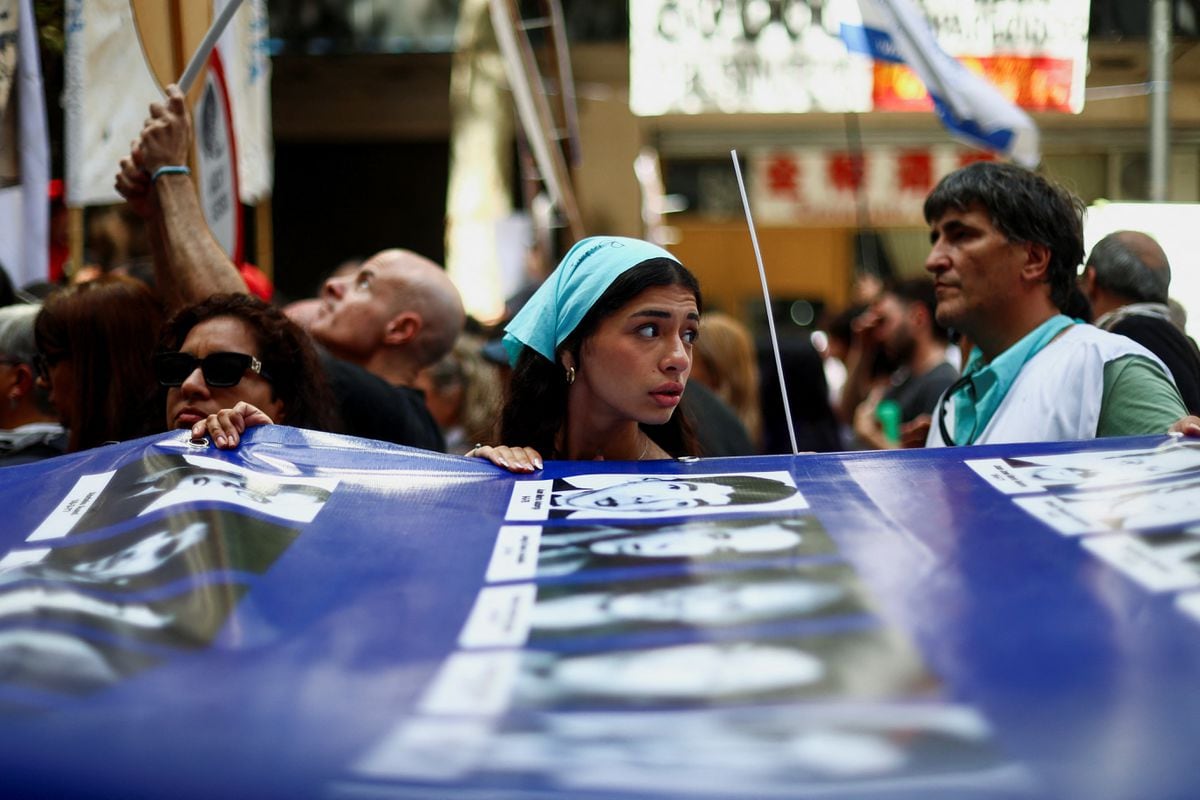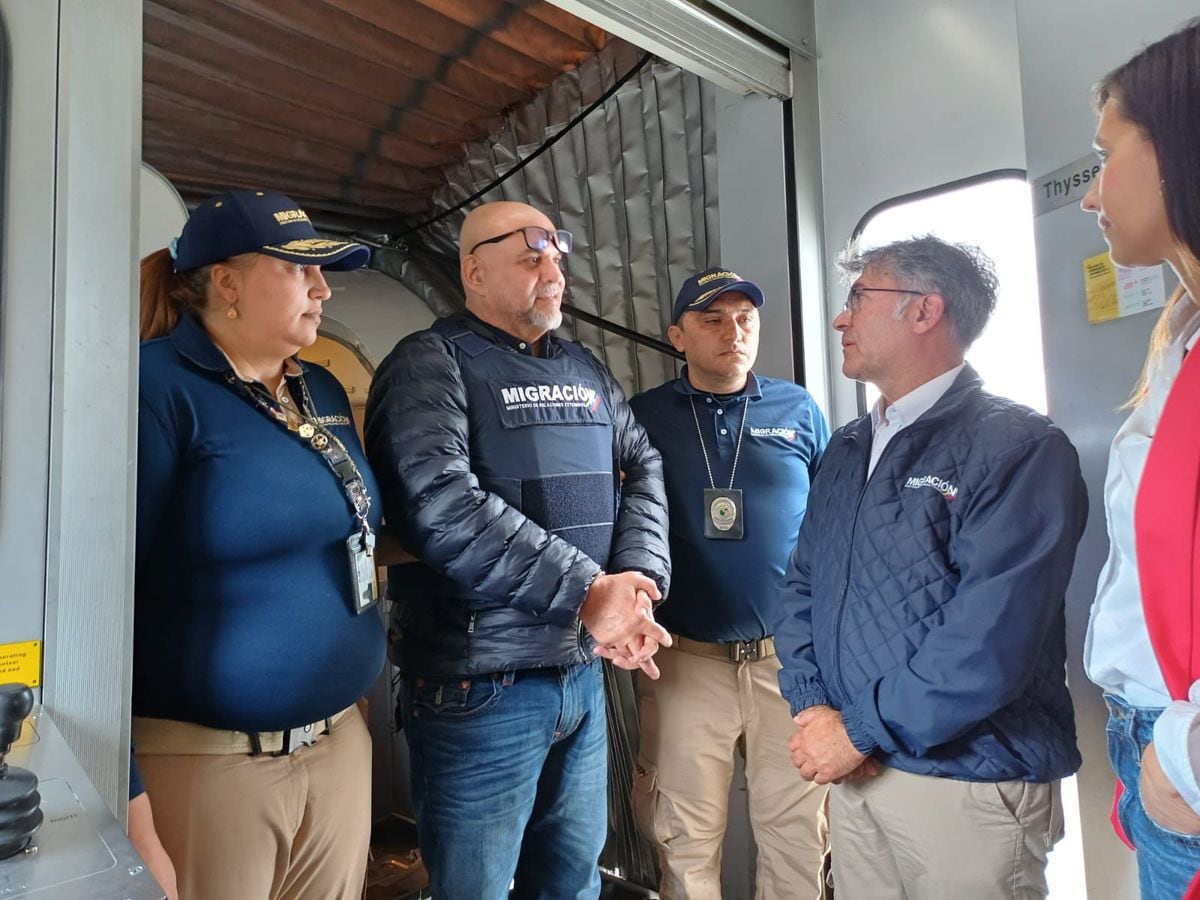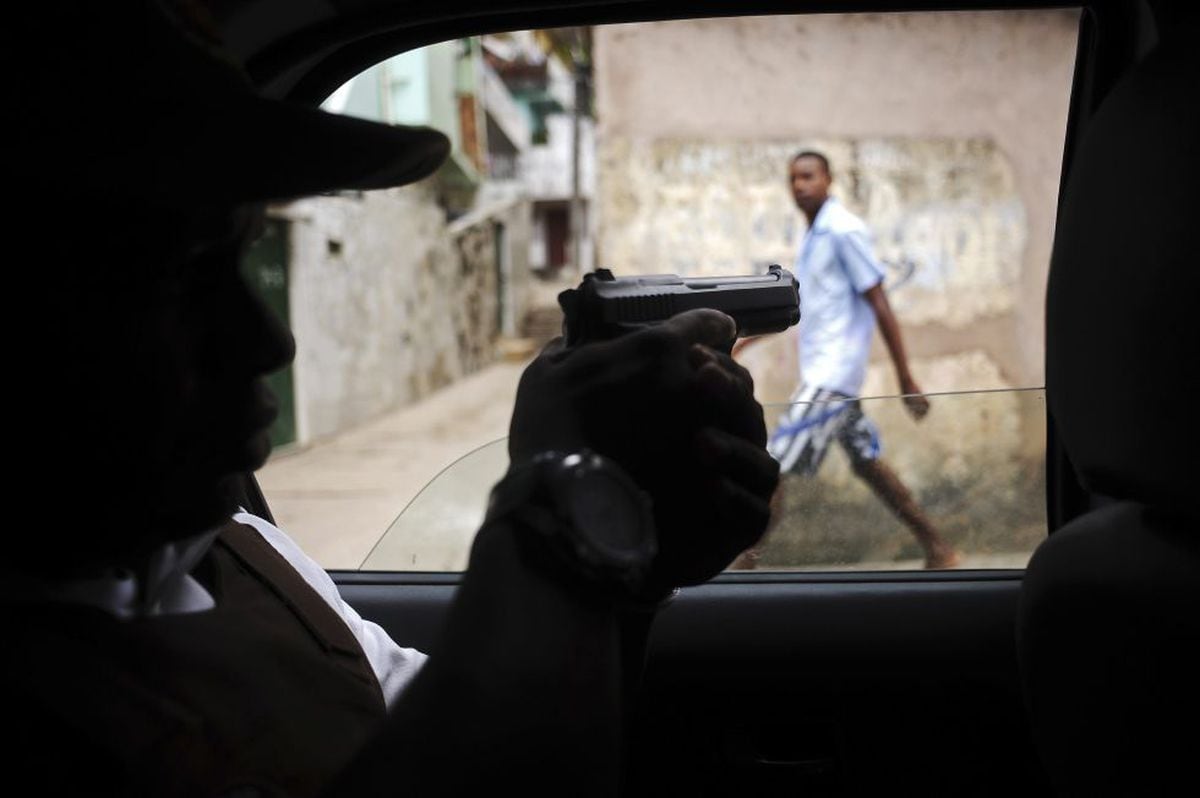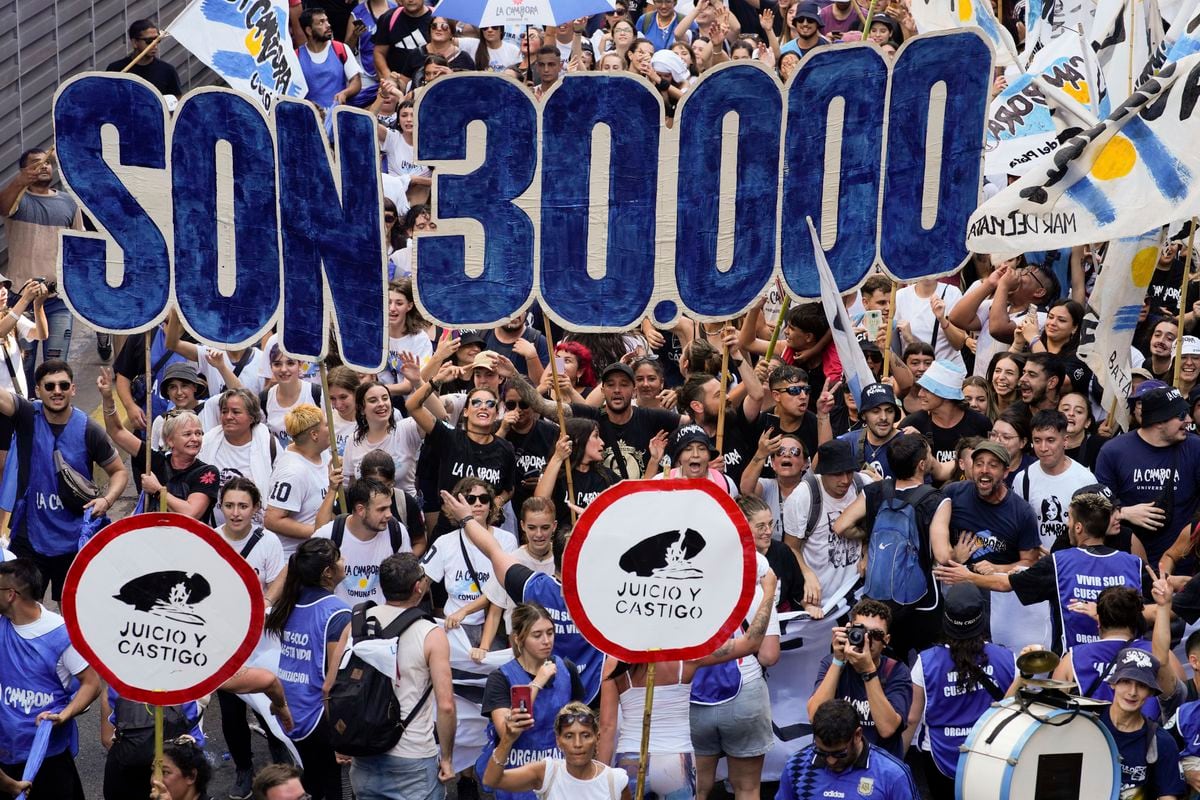They carried the remains of the bodies in hammocks and sheets. Thus they were transported to a common grave and there they were buried. Dozens of victims. Kids. Women. Seniors. All peasants, killed by shrapnel fire by soldiers ready to destroy everything. One day those soldiers arrived and promised that they would deliver food to a region of misery, they gathered the residents in a vacant area and massacred them. The dogs howled. The screams were desperate. Amadeo Martínez Sánchez, 49, lost 25 family members, including his mother and three brothers, ages 1, 5 and 7. It was on December 11, 1981. It was in a region near El Mozote. It was at the hands of soldiers from the Atlácatl Battalion of the Salvadoran Army, many of them trained at the School of the Americas. Of all the horrors that El Salvador has suffered,The Massacre of El Mozote and nearby places is the most terrible episode: at least 986 people (552 children and 434 adults, including 12 pregnant women) were killed in a bloodletting that lasted from December 10 to 12. "When we got closer, we saw that the pigs ate the corpses, the chickens were pecking at them, so we loaded the remains in hammocks and blankets and buried them all in a grave," recalls Martínez. 40 years have passed since that horror and neither he nor the rest of the survivors have received justice or reparation. "We are very disappointed," says the man who at age 9 witnessed the worst massacre in the Western Hemisphere.including 12 pregnant women) in a bloodletting that lasted from December 10 to 12. "When we got closer, we saw that the pigs ate the corpses, the chickens were pecking at them, so we loaded the remains in hammocks and blankets and buried them all in a grave," recalls Martínez. 40 years have passed since that horror and neither he nor the rest of the survivors have received justice or reparation. "We are very disappointed," says the man who at age 9 witnessed the worst massacre in the Western Hemisphere.including 12 pregnant women) in a bloodletting that lasted from December 10 to 12. "When we got closer, we saw that the pigs ate the corpses, the chickens were pecking at them, so we loaded the remains in hammocks and blankets and buried them all in a grave," recalls Martínez. 40 years have passed since that horror and neither he nor the rest of the survivors have received justice or reparation. "We are very disappointed," says the man who at age 9 witnessed the worst massacre in the Western Hemisphere.40 years have passed since that horror and neither he nor the rest of the survivors have received justice or reparation. "We are very disappointed," says the man who at age 9 witnessed the worst massacre in the Western Hemisphere.40 years have passed since that horror and neither he nor the rest of the survivors have received justice or reparation. "We are very disappointed," says the man who at age 9 witnessed the worst massacre in the Western Hemisphere.
Amadeo Martínez is preparing this Friday in the fall to attend a mass that has been organized as a tribute to the victims together with his neighbors. It is in the hermitage of his region, La Joya, a hamlet that extends in the soft mountains of the eastern part of El Salvador. The hermitage is a humble construction, made of rods and sheets, which shows the oblivion in which these areas remain despite what has been suffered. "Nobody wants to help us," laments Martínez. His lament also includes anger, because he says that to raise the monument for the victims of La Joya he had to donate the land, the State did not even pay for that. Martínez narrates by phone what he suffered, slowly, without getting upset, although he admits that he feels a deep sadness.
Coffins with the remains of two of the victims of El Mozote, in a burial ceremony in December 2016. JOSE CABEZAS
On December 9, 1981, his father, Jose Santos Sánchez, came home upset. He said he had heard rumors that the military would enter the area and asked his wife, María Inés Martínez, to leave the house. El Salvador was bleeding to death in a civil war that left at least 75,000 victims. It was a fratricidal struggle between the Army and the guerrillas of the Farabundo Martí National Liberation Front (FMLN). The military had the order to destroy what they assumed were "communists" who were trying to assault power in the country. The peasants were among the main objectives, indicated to give protection to the insurgency, which had a strong presence in the area. Amadeo Martínez's family left their home in La Joya and went down to another nearby hamlet. A neighbor, Jacinto Sánchez, gave them shelter,but the condition was that only the parents and the youngest siblings slept inside the house. He and his older brother had to stay outside. At dawn on the 10th they tried to leave the shelter, but the mother objected: she wanted to return home, stating that they had nothing to hide. He stayed with his younger children, while the older ones and the father went into hiding.
“On December 11, the military passed through La Joya. It was Domingo Monterrosa's Army, the Atlacatl Battalion. We hear the dogs barking and we worry. There were soldiers everywhere, a lot of movement. At two in the afternoon they took out the people who were in Jacinto's house. There were eight refugee children there. We saw when they were dragged away, screaming. One of them shouted that his mother was in the house and a commanding officer motioned for two soldiers to enter. There was a lady in bed, who had given birth to a girl. She was Jacinto's daughter-in-law. We heard the gunshot when they killed her. Three or four days later we left where we were hiding and went through the house. She was in bed and the girl with a knife buried in her throat. With the blood they wrote on the walls of the room: 'A dead child,one less guerrilla. ' He was a little angel. We don't understand why they did it, ”says Martínez.
Why is the question that for 40 years the survivors of El Mozote, La Joya and Los Toriles, villages located north of the department of Morazán, where the massacre was perpetrated, have been repeated. The journalist Alma Guillermoprieto was one of the first reporters to reach the region and narrated in a chronicle for
The Washington Post
the happened. “The guerrillas, who control large areas of the Morazán province, led us to the town, now deserted, and showed us the ruins of dozens of adobe houses that, according to them and the survivors, were destroyed by the troops. The decomposing bodies are still seen under the ruins and in the surrounding fields, despite the fact that a month has passed since the incident, "he said in the text published on December 27. The story coincides with that of Amadeo: when they arrived at their old, destroyed village and saw the pigs eating the corpses, the survivors used hammocks and sheets to collect the remains and bury them. Following the publication of Guillermoprieto's chronicle, the United States government denied the veracity of the story and said that there was a "plan" to discredit the Salvadoran armed forces.
Lieutenant Colonel Domingo Monterrosa is in a military operation with the Atlacatl Battalion in San Miguel, El Salvador, in August 1983. Robert Nickelsberg (Getty Images)
Fidel Pérez Pérez is 46 years old and his story is just as heartbreaking. He remembers that when the military arrived, his land was razed and he and his family, along with dozens of neighbors, ran to hide. The elders, who knew the region well, led the flight. They spent three days without eating, drinking, sleeping and wet from the rain. There were about 60 people. Due to the conditions they were in, the elders decided to return to their village at dawn on December 11. “At four in the morning they shot us. The moon was clear and is a witness to what happened to us. People fled, dispersed. My dad and my mom held my and my siblings by the hand. My mother was carrying my little sister who was three days old. We ran, we ran, until it cleared. We arrived at a place known as Cerro Ortiz.We stopped there around nine in the morning and soon about 20 people met, ”he says.
They were all near a cave that somehow offered protection. Fidel relates that a woman decided to go down to a nearby river to wash her children's clothes, when the military saw her. "She came running and told us: 'Today they kill us.' A catechist was with us and we began to pray. Then a soldier appeared who was short, with a blotchy face. He didn't say anything. He pulled a grenade from his chest and tossed it. It was eleven in the morning, ”continues Fidel. The detonation made the refugees jump. Fidel, his father, and two brothers lost consciousness. “We didn't know if we were asleep or dead. We woke up at six in the afternoon. My dad talked to us. I had wounds on my forehead and arms and my younger brother's ears were burst. My dad wasn't listening either. Above us were the dead,we were rising from the dead, ”he recalls. Twelve people were killed, including Fidel's mother and his newborn sister. The survivors fled to hide and eight days later, when the military left the area, they returned to the place to bury the bodies, which were decomposing.
In 1991, those who survived that massacre returned to the areas devastated by the military and found the ruins of what were their homes. They had to start from scratch, without support. The remains of Fidel's mother and sister were exhumed in 2019, for DNA tests, but to date neither the tests have been done nor the remains have been handed over to the family, laments the peasant. "We want to give them a Christian burial," says the man. “We continue with our flag of struggle. We demand justice, we want to know the truth. And that these events are not repeated ”, he says. And he adds: “We were not guilty of being in the middle of two sides that were fighting. These are open wounds. We are going to die and we will never forget it. We will always carry them in our hearts ”.
Marta Arcadia Ramírez awaits the exhumation of the remains of four family members who were executed by the army during the civil war in October 2003 LUIS ROMERO (ASSOCIATED PRESS)
With the peace accords in Central America and the establishment of democracy, the successive governments of El Salvador denied the massacre, although the prestigious Argentine Forensic Anthropology Team had worked in the area and in 1993 corroborated the complaints of the massacre. An amnesty law approved in that year put a stone on the case, which fell into impunity, although the victims did not give up in their efforts to find justice. They organized, sought support from human rights institutions and the case reached the Inter-American Court, which on October 25, 2012 recognized the State's responsibility for the human rights violations perpetrated by the Salvadoran army in El Mozote. Despite this, none of those responsible have been tried for the crimes committed.The victims saw a glimmer of hope in July 2016, when the Salvadoran court declared the amnesty law unconstitutional. Then the magistrate Jorge Guzmán reopened the case and became the judge in charge.
The arrival of President Nayib Bukele encouraged the victims, due to his speech against corruption and the impunity of previous governments. It was Bukele who at the beginning of June 2019, after assuming the presidency of that small country, made a decision that vindicated him: his first order as president was to remove from a military barracks the name of Lieutenant Domingo Monterrosa, whom the Commission of the Truth of the United Nations (created to investigate violence during the civil war) has claimed to be responsible for the massacre. The joy, however, did not last long, because then Bukele, in his eagerness to seize all power in El Salvador, made controversial decisions that have paralyzed the process. The Legislative Assembly, controlled by the ruling party,approved a decree that obliges judges over 60 or with 30 years of service to resign. Judge Jorge Guzmán was removed from the case. In October last year, Bukele unleashed a new political crisis in El Salvador by preventing the military files related to the massacre from being unlocked. Both the Executive and the Army disobeyed a court order issued by Judge Guzmán for the inspection of the files as part of the judicial process that seeks to clarify what happened in that Salvadoran community.Both the Executive and the Army disobeyed a court order issued by Judge Guzmán for the inspection of the files as part of the judicial process that seeks to clarify what happened in that Salvadoran community.Both the Executive and the Army disobeyed a court order issued by Judge Guzmán for the inspection of the files as part of the judicial process that seeks to clarify what happened in that Salvadoran community.
"Since I left, the case has been paralyzed," says Guzmán by phone. "I think the new judge has done nothing because it is a voluminous, gigantic case, which has to study it, soak up it," he explains. The magistrate affirms that he has had to struggle with the institutions to move the process forward. “In a society as polarized as ours it is difficult. From the side of the military they did not see with good eyes that the case was opened, they said that wounds from the past should not be reopened, because that prevents a national reconciliation from being reached and progress in democracy. Sectors of the left expressed a lukewarm sympathy, but it was somewhat simulated, hypocritical. Neither the military nor the FMLN should be investigated,because both have cases of human rights violations during the armed conflict and they protect each other. This case has advanced under pure international pressure, from the victims and because of the support of the Inter-American Court ”.
A man stands in front of the coffins of victims of the El Mozote massacre, Morazán, El Salvador, in December 2000. EDGAR ROMERO (AFP)
At least 17 retired military personnel are accused of being involved in the massacre. They are, says Guzmán, two who were part of the Joint Chiefs of Staff of the Army. There are others who were chiefs of important military units, such as the Air Force and Artillery, and officers who led the operation. Among the group of soldiers subjected to the process is the Minister of Defense, José Guillermo García, who was convicted in the United States and deported to El Salvador. Why does Bukele protect the military? "The rulers in our countries need to do well with the army to stay in power," Guzmán conjectures. "There is a pact: the military gives him stability and he supports them by not allowing these men to face trial," he says. The magistrate is harsh in his criticism of the president. “He has made a political handling of the case.Bukele has mocked the good faith of the victims, their desire for justice. What President Bukele does, like previous governments, is to continue this policy of covering up perpetrators of human rights violations during the conflict. That policy only perpetuates impunity ”.
Amadeo Martínez Sánchez also criticizes the president. This farmer claims to be "very disappointed" by Bukele's actions. “Upon assuming the mandate, he said that he was going to open the military archives. He even took a delegation of the victims to the Presidential House, where he made a promise to do justice. Now he claims that he has nothing to do with it, because he was a child when it happened. That hurt us, because it is disrespectful. We deserve respect and that there is justice ”, affirms the farmer. Despite the political tide against it, neither the victims nor their supporters give up their fight to avoid impunity. "This is a process that has no setback," says Judge Guzmán. “It has already advanced by 85% and what is lacking is little. This process has to come to an end whether I am there or not ”, the magistrate concludes.
María de La Paz Chicas places flowers in the area dedicated to the children who were murdered during the El Mozote massacre in November 2021. MARVIN RECINOS (AFP)
Subscribe here to the EL PAÍS América newsletter and receive all the informational keys of the current situation in the region






/cloudfront-eu-central-1.images.arcpublishing.com/prisa/PTHAI7IGP5DS5LX42CY7N3YVXU.jpg)
/cloudfront-eu-central-1.images.arcpublishing.com/prisa/AYBDQARVBB2WDG6IFPXHYFIMBM.jpg)







